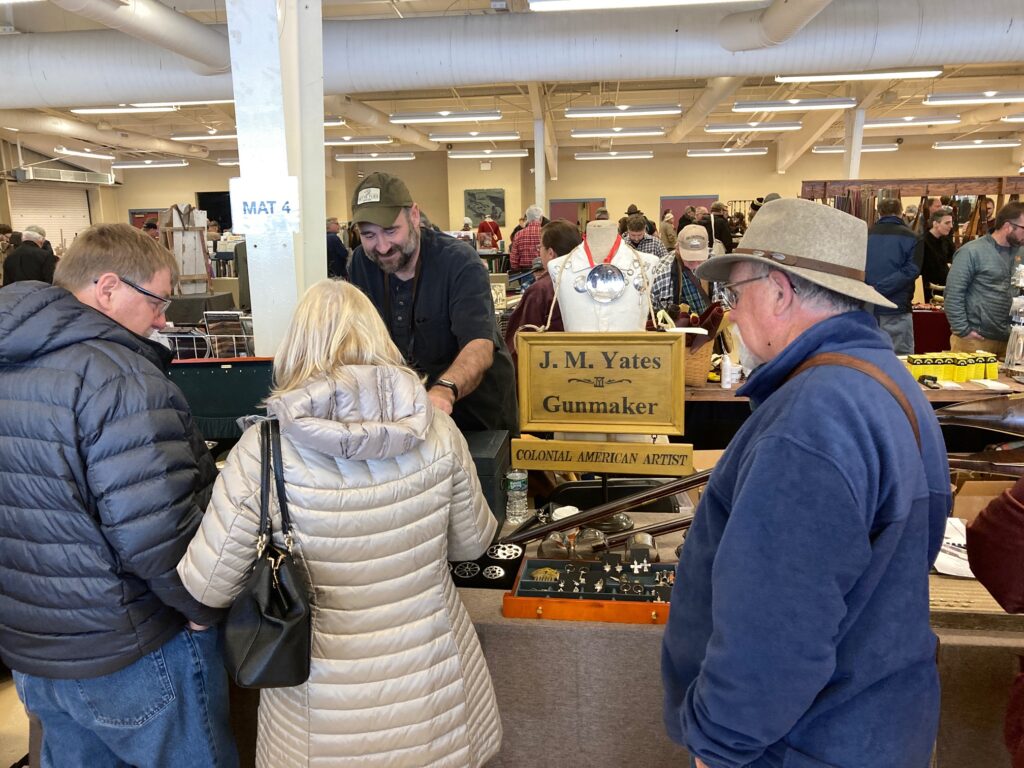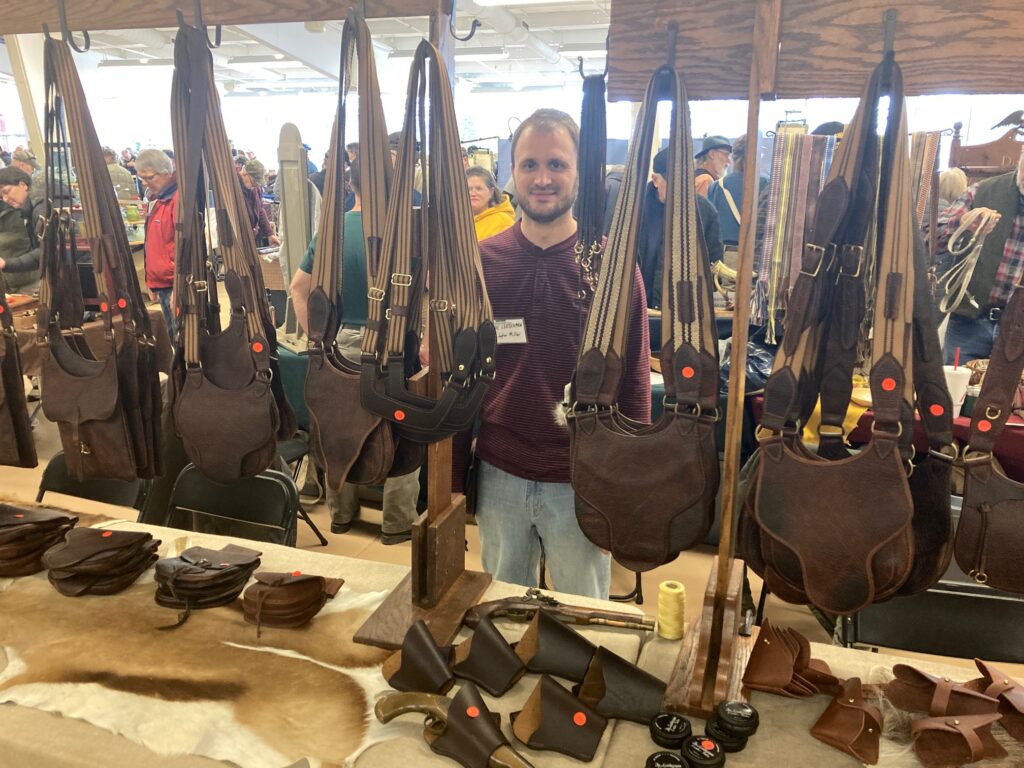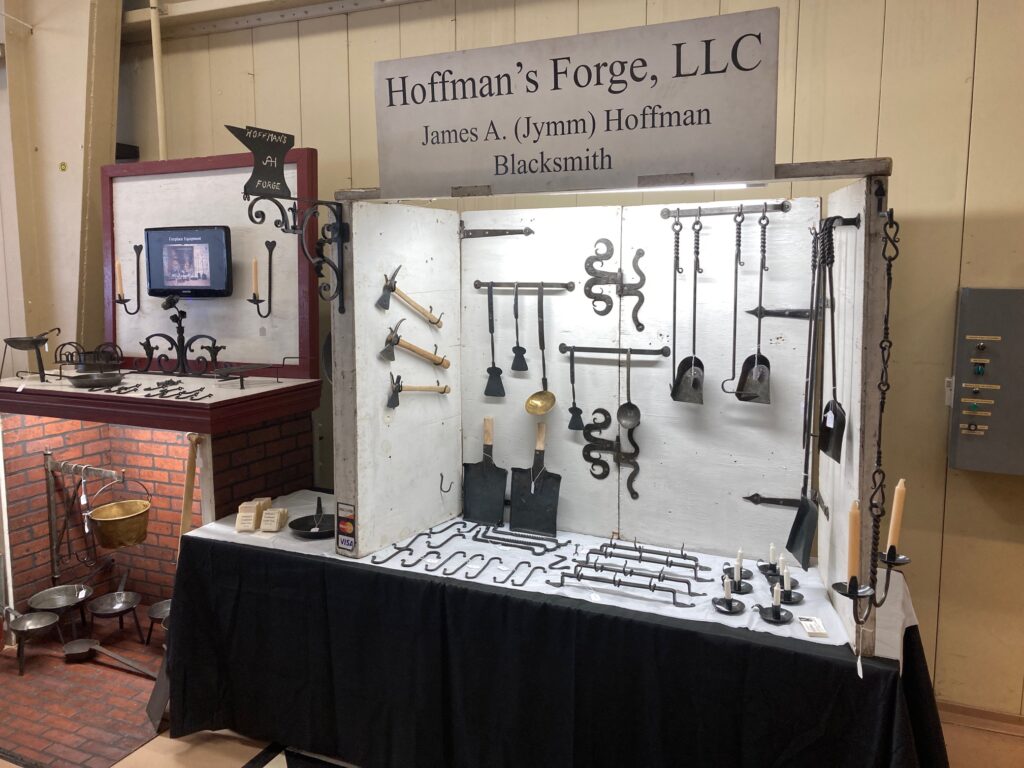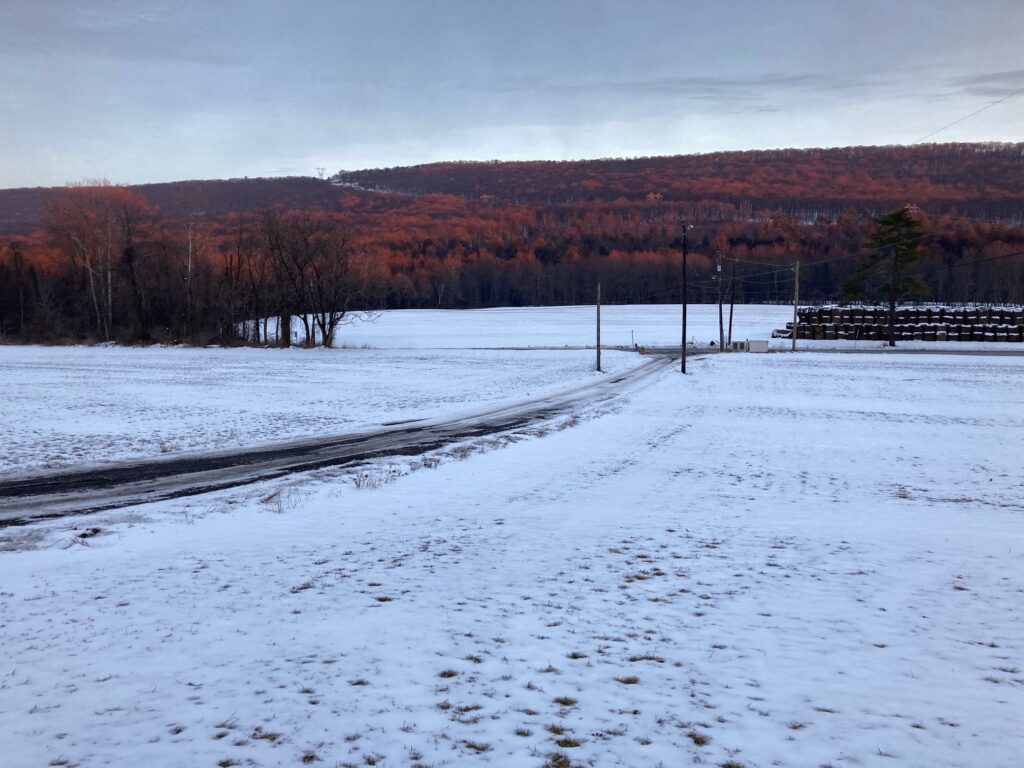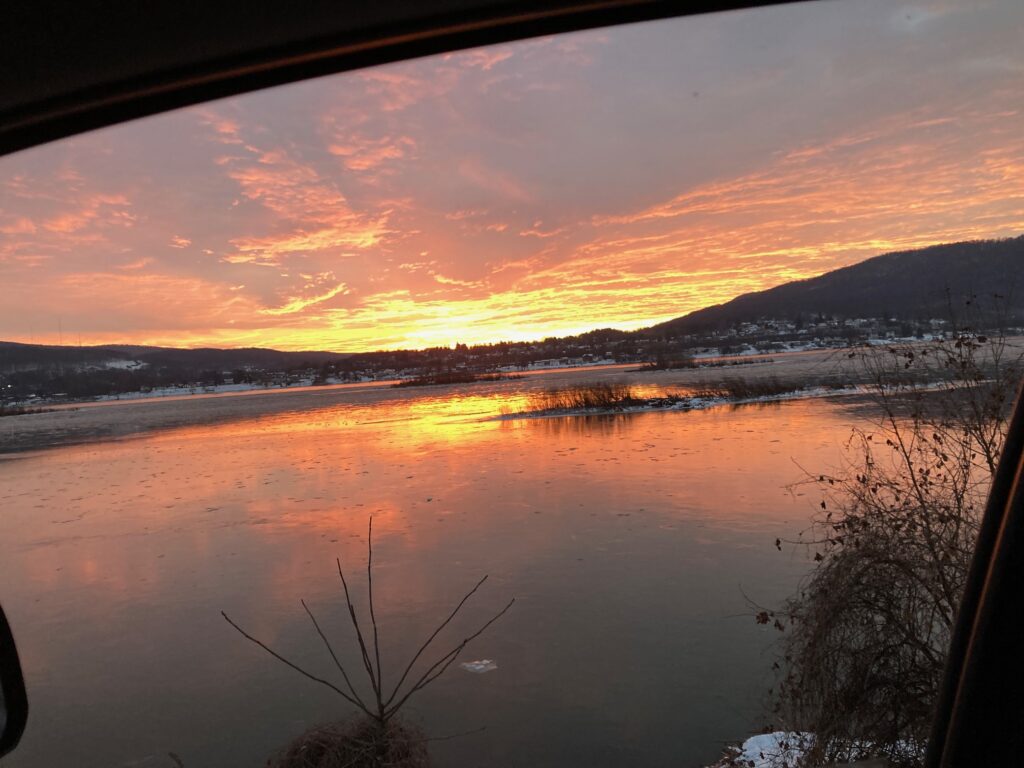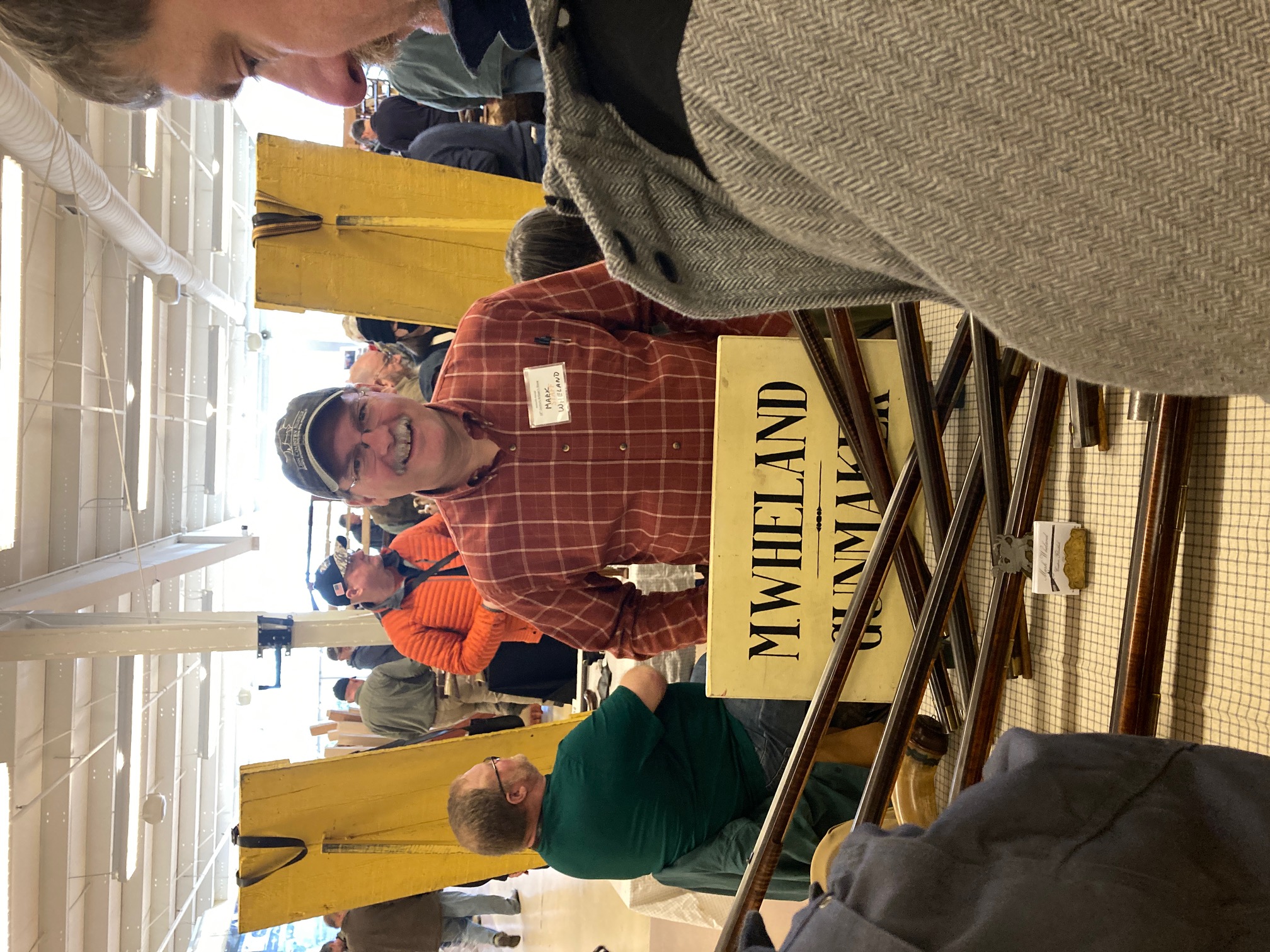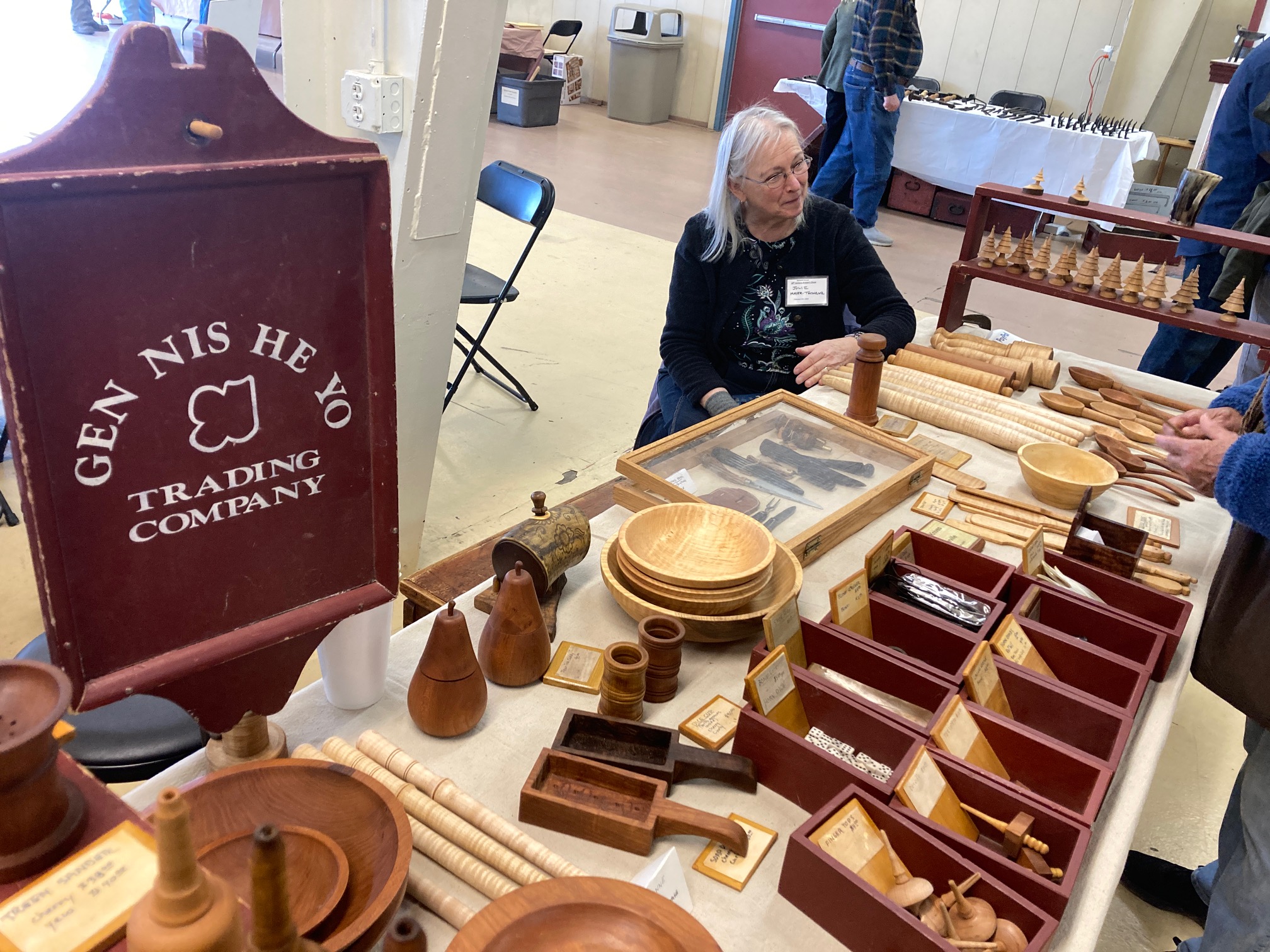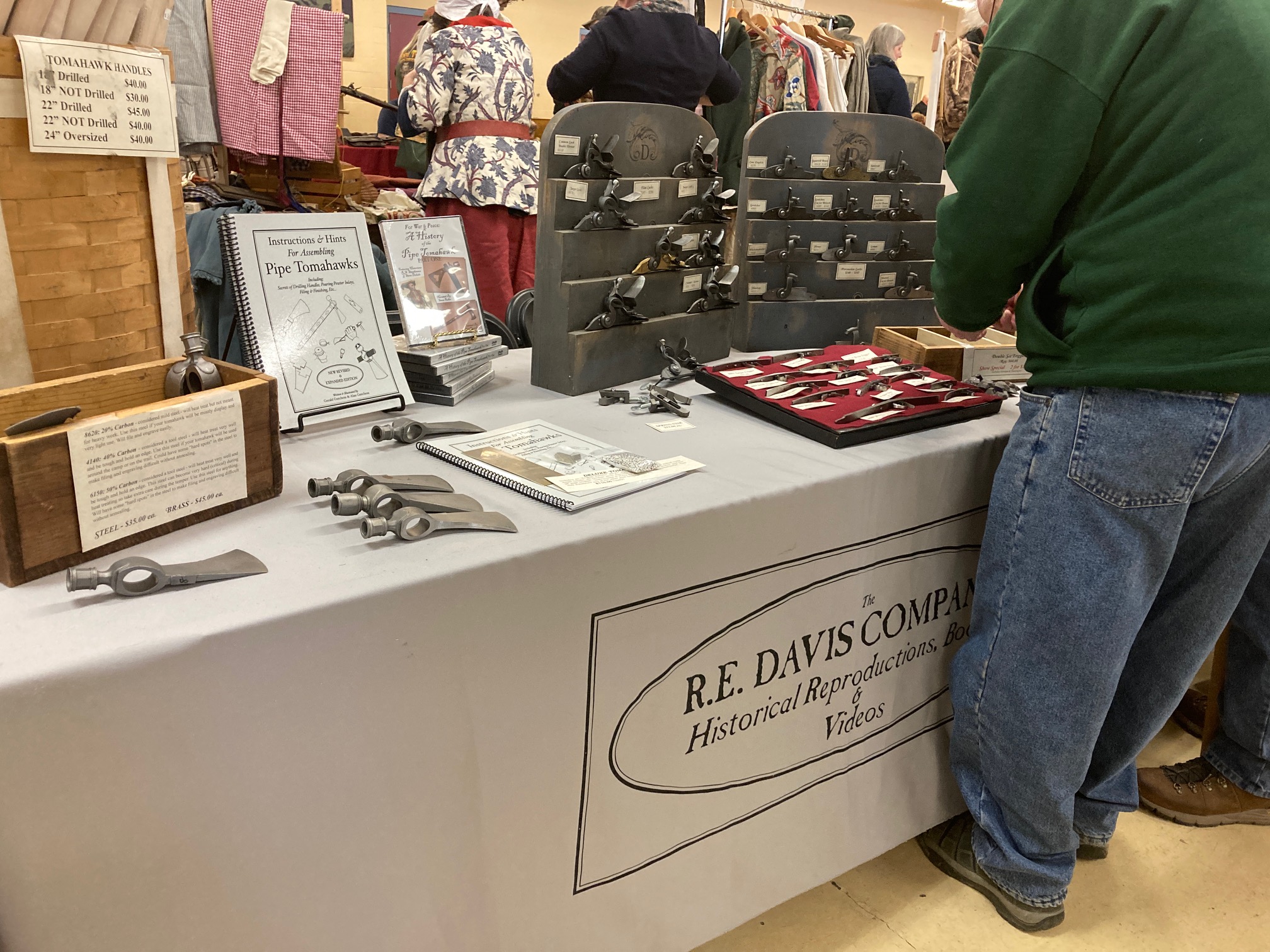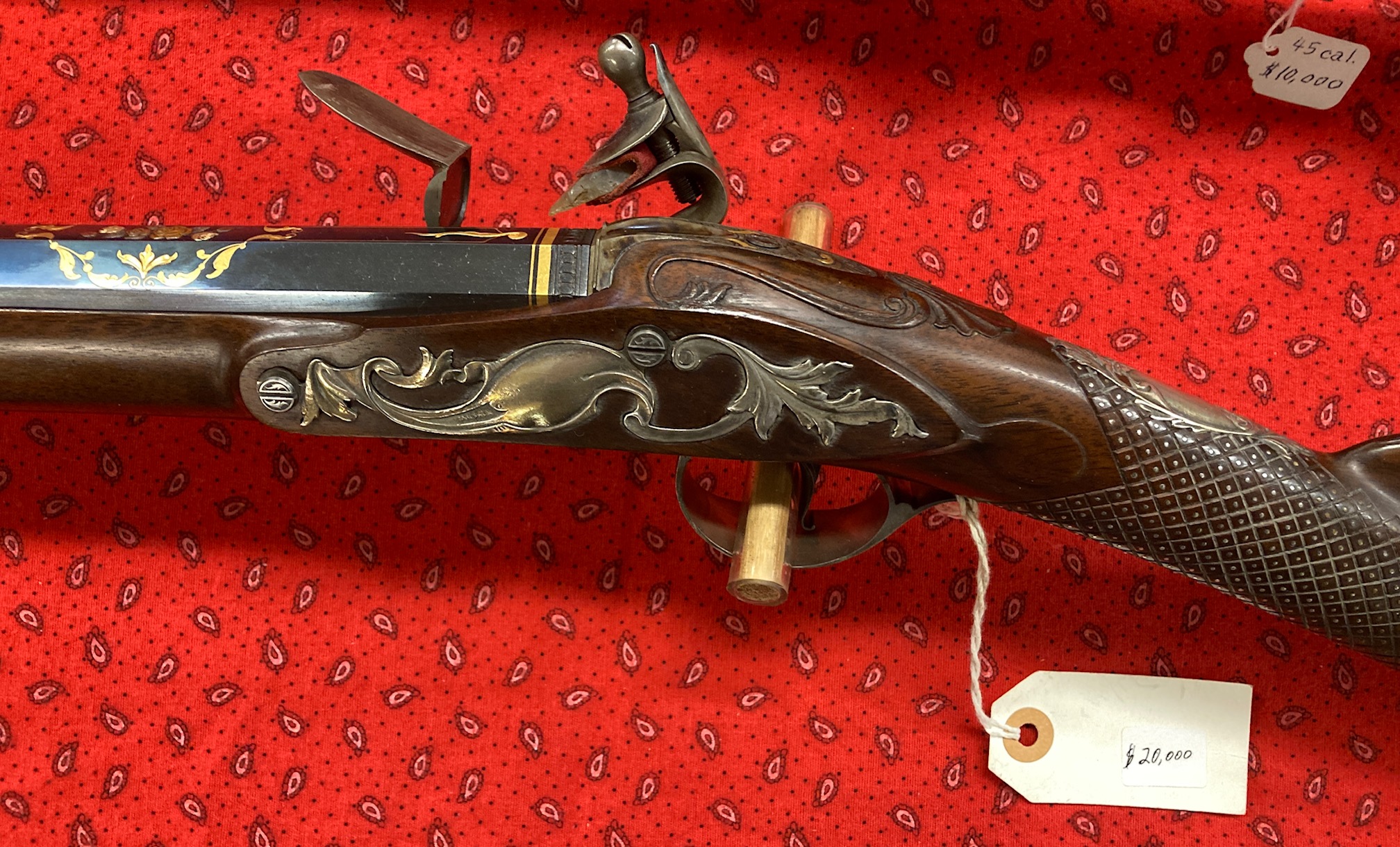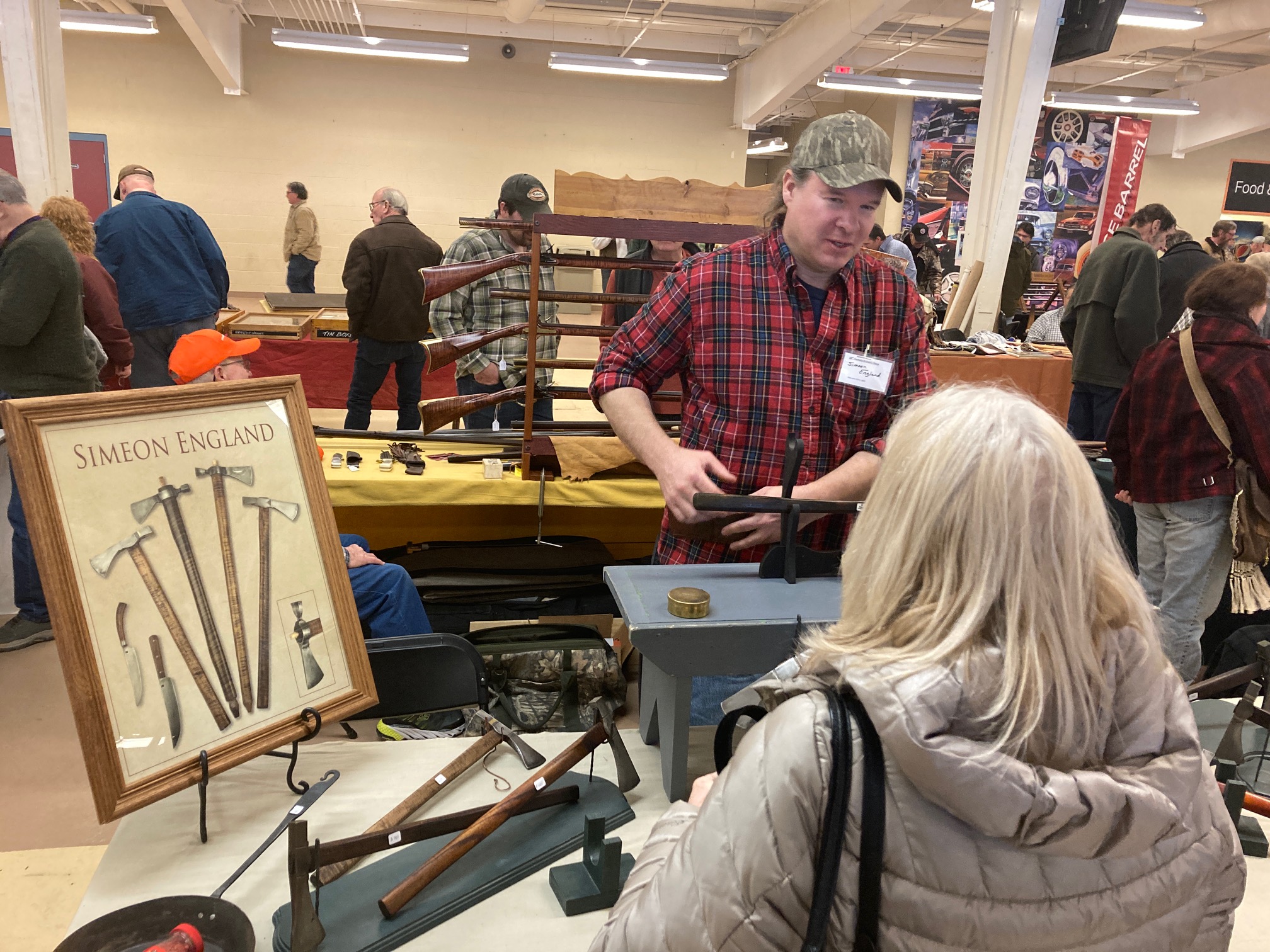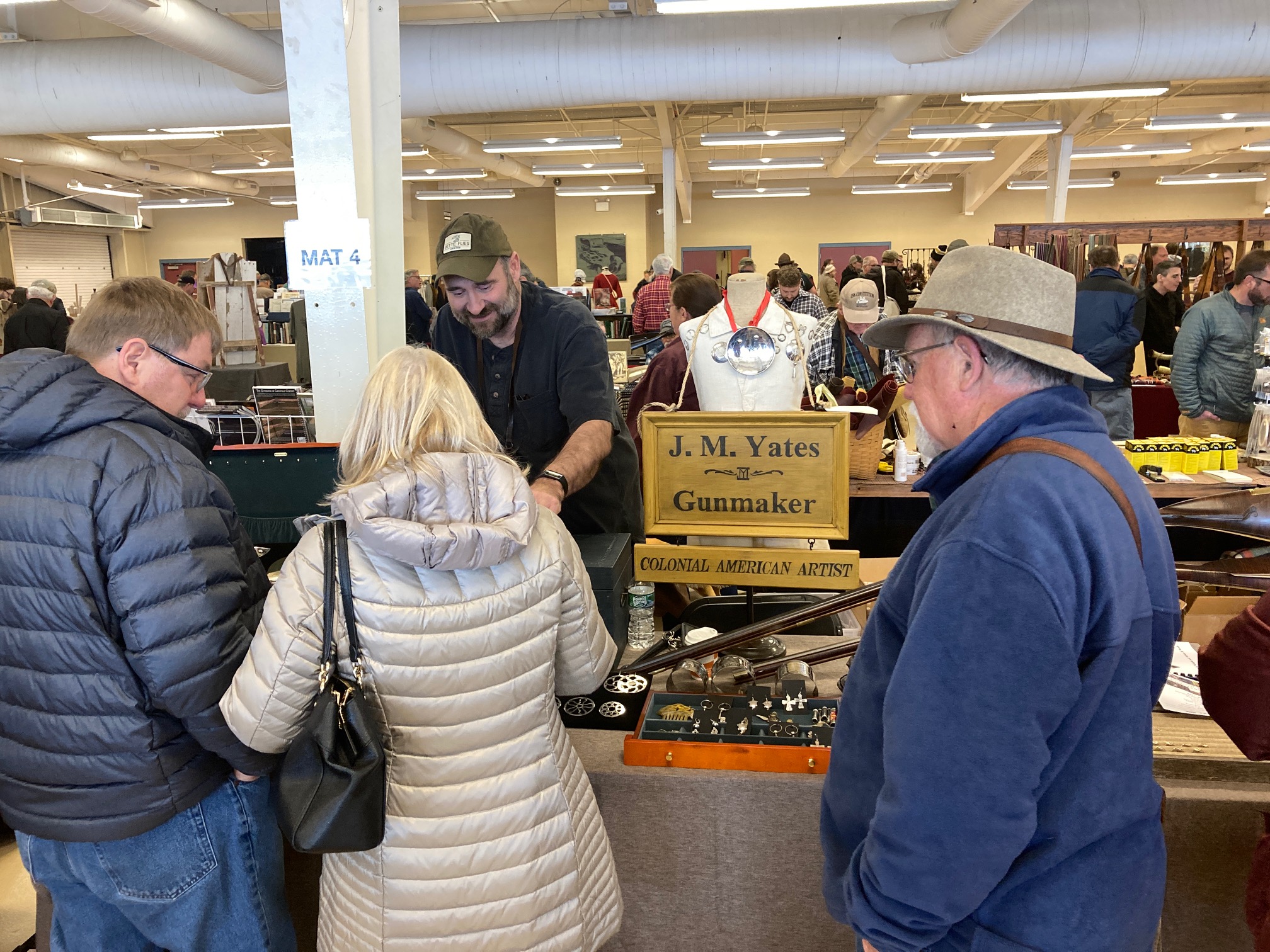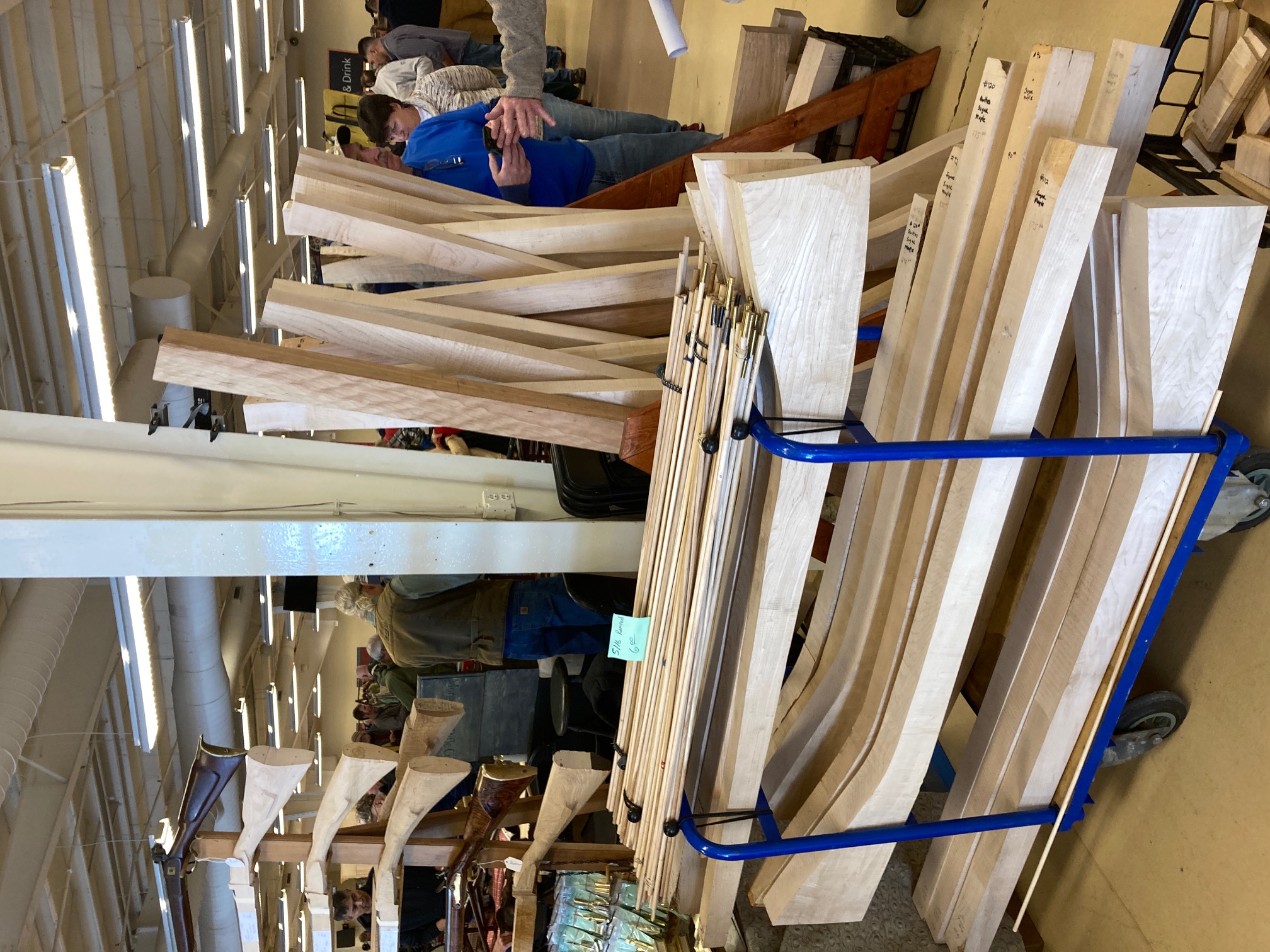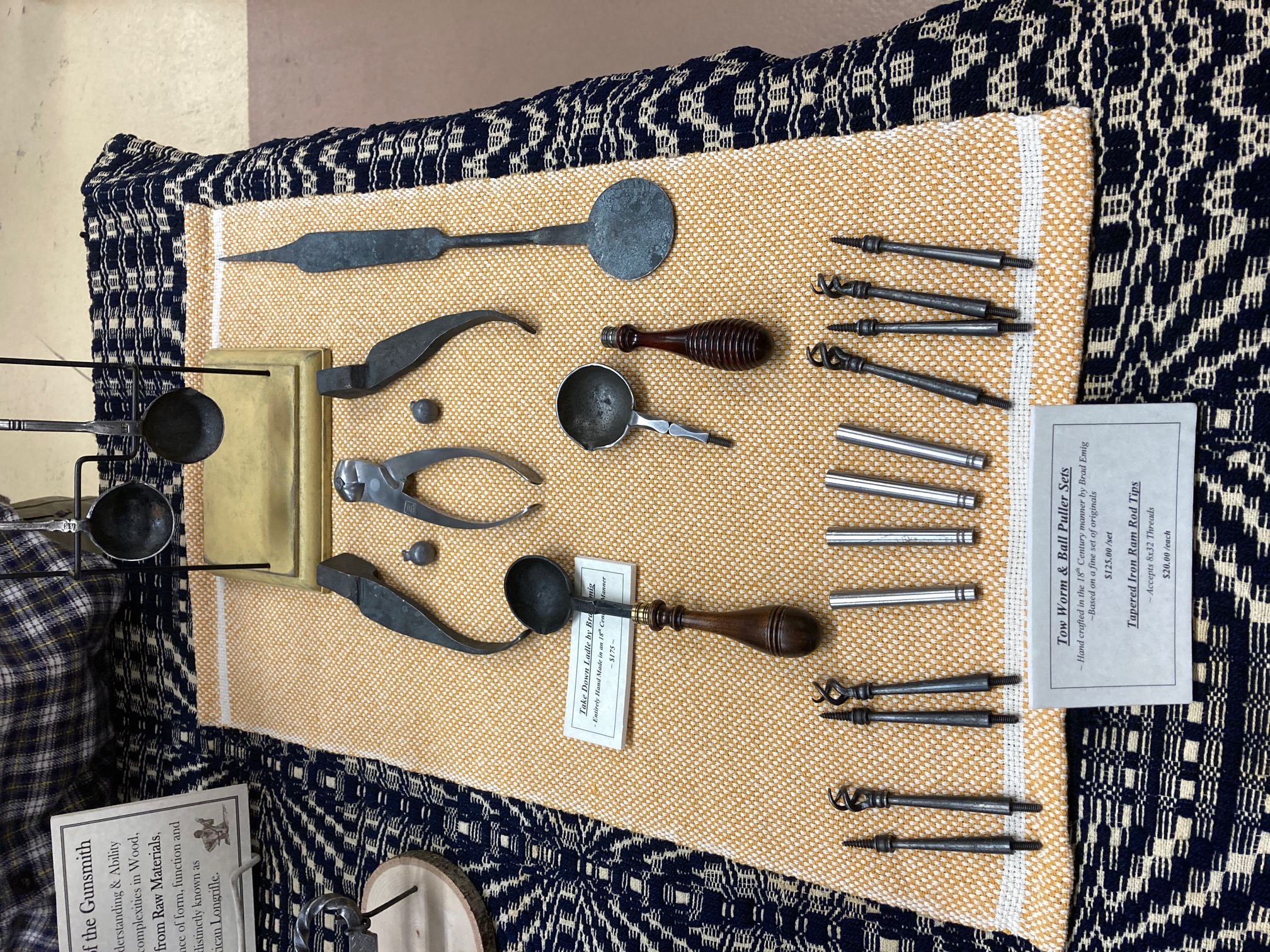Posts Tagged → wood
Guys (men), don’t be an idiot
Emergency Room staff: “Hi there, what can we do for you tonight?”
Me: “I’m an idiot.”
ER Staff: “Yeah, we see a lot of those in here.”
Two hours before, the dry white oak board was very hard, and the cutter blades were very dull, and so that board was giving the cutter fits. Never mind that I had been running the cutter all day to fulfill a large order of oak, and that I had already sharpened the primary blade once, hours before. When the board end bounced off the dull blades, I leaned into it to force the cut. The last thing I remember is a flash of white in the dusk that was enveloping my worksite, and suddenly I knew I was hurt.
Reeling backwards and clutching my face, I first checked my teeth, my eyes, and unhappily noted the gushing blood pouring out of my face. The pain was overwhelming, and the copious blood told me it was serious.
After leaning on the order of banded lumber, hunched over and collecting my wits, I again took stock of my injured face. All my teeth appeared to be in my mouth, and I could see through my heavy wire frame glasses with both eyes. A big pool of blood was congealing on the lumber below me, and blood was liberally dripping and splotching all around me, wherever I went.
“Broken nose, you idiot,” I said out loud, to no one in particular. Time was 7:40 pm and anyone who might have been around to help me during regular working hours would have been long long gone home by then. From March through October I work farmer’s hours, which means work only ends when there is insufficient daylight to work by. When you choose to work until dark and until after dark, which I actually greatly enjoy, you usually work alone. And if you make a stupid, idiot mistake, you will bleed alone. If you are really unlucky or a really big idiot, you will die alone.
So, guys, don’t be an idiot.
Here are the idiot mistakes I made, which you should learn from and not make yourselves:
- Working around machinery and powerful tools while tired is an idiot mistake. All week a cold had dogged me, and even before beginning to work very physically, I was already run down from it. Hinyucking huge gobs of nasty green mucus everywhere every five minutes is a signal that your body is not well, that it is fighting off some infection or cold, and that it needs rest. Take the hint and rest, even a little bit, here and there throughout the day. On top of being sick, I had worked hard all day, lifting and moving logs and lumber, and when the accident happened I was just deeply bone tired from the heavy physical labor work. Mistakes happen much more easily to tired people, because tired people have poor judgment and slow reaction time. I had all of this in spades, and paid for it.
- Don’t work with dull tools. That cutter was battering the last piece of oak, not cutting it, and yet I foolishly leaned in close to physically force the very last piece of wood through. Big mistake. The powerful motor kicked that wood back into my face before I had time to second guess my poor decision. And yes, I had just been telling myself that after this very last piece of wood, I would remove the cutter blades and sharpen them. Too late, idiot.
- Wear correct protective equipment. Gloves are a must around wood and power tools, but the job I was doing also required serious face protection. Because I wear large, rugged eyeglasses everywhere, every iteration of which shows the battle scars of years of hard physical work, I have become a little lazy about better protecting my eyes. That became apparent about ten years ago, when some grinding wheel metal incredibly ricocheted up under my eyeglass lenses at an impossible angle and stuck in my eyeball. Took a while for that junk to work its way out. Just like with the safety event that prompted this particular essay, that day at the grinding wheel I had lazily neglected to simply slop my big clear face shield on my lumpy head and enjoy the benefits of complete protection from flying fragments, impacts, etc. Had I been wearing the face shield, hanging up on the wall just twenty feet away, while running the dull cutter, I probably would have had a good bruise across my face from the kick back, but nothing broken and no lost work time.
Last time I had a broken nose was my senior year in high school. Like the young idiots we were, a bunch of us were playing full tackle pick up football, in the dark. Heavily rushed, the opposite QB had lateraled the football to Rafael Richards, who, being athletic as hell, rocketed straight up the middle. Playing safety position, I put my head down and aimed straight for him. Rafael also put his head down to punch through the defenders, and the two of us woke up a bit later in the Chester County Hospital ER on two gurneys, next to each other. Naturally, we each had a mirror image injury, which included a broken nose and a deep gash in the forehead that required 17 stitches in the meat and another 15 stitches in the skin above.
Rafael went on to get his MD from Harvard Medical School, long before DEI and wokeness there rendered such a degree a question mark, instead of the world class achievement it should be. Somehow I just know that Rafael does not run the risk of getting his nose broken while being a fancy Harvard trained physician in an air conditioned office.
Me? I’m an idiot farting around with penny ante wood orders in the mountains. Because I like it.
But guys, regardless of doing what you like or don’t like, don’t be an idiot.
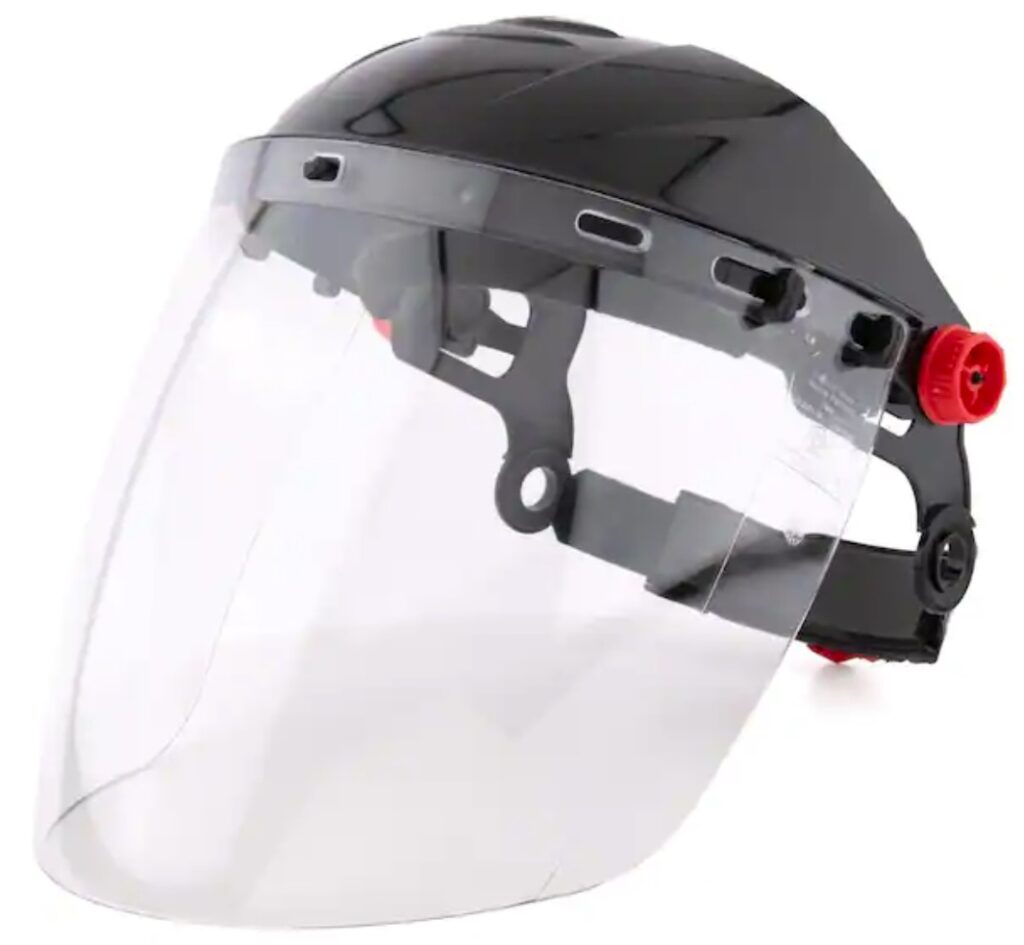
Cheap but highly effective face shields are sold everywhere for twenty bucks. Buy one and wear it. Don’t be an idiot
Two great shows coming up soon!
Two great shows are coming up soon. If you live in central Pennsylvania, then fortunate you. If you live farther out or even far away, even out of state, both are worth traveling to, even from far, far away.
The first show starts this Friday, the 18th Century Artisan’s Faire, now (as of last year) held in Carlisle, PA, at the Carlisle Expo Center at 100 K Street. It used to be called the Lewisburg Show, because for decades it was held in Lewisburg, PA, along Route 15. The Carlisle Expo Center is SO MUCH BETTER than the prior hotel venue. I went to this show last year and could have easily spent both days there. Better lay-out, better room, more room, higher ceilings and far better lighting.
If you are afflicted with history-itis, with a passion for hand-made tools and utensils of all sorts, including eating utensils like forks and knives and plates, with blacksmithing and historic reenacting, with hand-carved curly maple furniture and gunstocks, leatherworking, with anything black powder or flintlock or percussion, with 17th and 18th century clothing, then this show is for you. I have been attending for I don’t know how many years, a long time, and every time I go it’s worth it. The nationwide talent that is assembled at this show is amazing to experience.
The second show starts this Saturday, the Great American Outdoor Show. It is held for the whole week in Harrisburg at the Farm Show Complex on Cameron Street. This is the “new” show built on the ashes of the old one, which I helped end by starting a boycott.
The prior show was run by a British promoter, and they had no feel for America, Americans, guns, gun rights etc. In the immediate political backwash of another Democrat-run mass school shooting, that British promoter tried to prohibit exhibitors from having AR-15 platform rifles. That set off a slight negative reaction among the paid participants, advertisers, and attendees that culminated in the boycott, which ended the show that year. And it ended that tone deaf promoter’s role in the show ever-after.
In the press interviews I did about shutting down that show, my favorite quote was “The British did not understand Americans in 1776, and they still don’t understand us in 2012.”
To which I think we can easily now add the entire Democrat Party, because it is openly and officially the political party of big government, of citizen disarmament and gun confiscation, of digital currency and your money control, of high taxes, of speech control, of thought control, of censorship, of car control, of health care control, of Covid lockdowns and private citizen movement control, but not USA border control.
Nope, under the Democrat Party the American border is wide freakin’ open to tens of millions of anyone and everyone from around the world.
So, go to these two shows. Both are very family friendly, regardless of what your family members each like. You will be really happy you did go. Enjoy America and freedom while you still can.
On Friday and Saturday you can rub elbows with gunpowder horn makers, flint knappers, flintlock and percussion rifle makers, black powder bag makers, historic dress and bonnet makers, tri-corner hat makers, and blacksmiths.
On Sunday you can go to the Farm Show Complex and see the whole world of tactical socks and vests, endless semiauto blast-em rifles as well as very cool historic lever action rifles and Wild West revolvers, bushcraft duck calls, high fence deer hunting legends and other TV created one-dimensional personalities, useful ATVs, fabulous boats, and cool end-of-the-world survival RVs, high tech synthetic and high tech wool outdoor boots and clothing, hunting guides from all around the world, and all kinds of fishing stuff. The Great American Outdoor Show really is an amazing experience. I highly recommend it.
I myself will be both a visitor and a volunteer at the GAOS. After many years of volunteering at the show and its predecessor, I took 2021-2023 off. This year I will be volunteering one or two days with the Pennsylvania Trappers Association, a wonderful conservation group of which I am a Life Member. Come on by the PTA booth and chat with us!
Reviewing the Marlin 1895 SBL
I have had some Marlin rifles, and what American deer, bear, or small game hunter doesn’t have one or two along the way in a life in the woods. But I never got so excited about one of them that I needed to join an online forum to discuss them and compare notes on handloads (handloads are non-commercial ammunition loaded by hand by the end-user, on a personally owned loading press, allowing the shooter to tailor ammunition to exacting tolerances and specific uses). This changed with the purchase of a new Ruger-made Marlin 1895 SBL, which I am really liking (after sending it back for much needed warranty work immediately after taking possession of it brand new in the box from the factory – ahem).
Overview
The new Ruger-made Marlin 1895 SBL (https://www.americanrifleman.org/content/2023-rifle-of-the-year-marlin-1895-sbl/) is a rugged, well designed firearm that I bought for two reasons and for two uses: It is fast shooting and unusually hard hitting within 50-60 yards for a sporting rifle, and I cannot think of a better rifle to hunt with on our bear drives here in PA and on bear hunts in Alaska.
After several months of ownership, here are my experiences with this gun.
Despite purchasing it brand new from the factory, I returned it to Marlin one day after picking it up from the gunshop, because the lever screw backed out, the action kept binding up, it was difficult to cycle the lever, had lots of sharp metal edges, and proud wood around the tang. This gun should have never been allowed out of the factory in the first place, and yet the buyer demand is so high that there must be pressure on the factory to just sling them out the door. According to reports made by other new owners, my experience is not unique. Ruger Marlin is going to kill their golden goose if they keep up this sloppy behavior. The gun is being sold on its presumed high quality.
The “Improved, slimmer” Forearm
While Marlin touts that the new, improved 1895 SBL forearm is slimmer than the old one, it is still too fat. This forearm is hardly easy to handle, and is not slim by any definition. It can easily use another 1/8” shaved off each side, or more, and tapered, like a shotgun forearm. That is, if you mean what you say about the forearm being easier to handle, dear Marlin.
Floppy Trigger Syndrome
The SBL’s factory trigger is pretty good, though it could be better. It is almost crisp, with a very defined and short step of creepy travel, and no stacking, but is a bit heavier than I and other users would like. It works well as a hunting trigger, which is all it really has to do anyhow. I don’t think this trigger was designed by a liability-minded lawyer. Other reviewers have reported that their 1895 SBL triggers were coming in between 5.5 to 8.5 pounds pull weight, and I am just guessing that this particular gun’s trigger is around 5.5 pounds. My preference would be in the 2.5-4.0 pound pull weight range, but I do not believe this factory trigger is adjustable. So “it is what it is,” as that tired old cliché goes, though there are superior aftermarket triggers available (https://www.wildwestguns.com/product/trigger-happy-kit/). One thing I do not like about the factory trigger is that it flops around and can make a tiny metallic sound. It would be preferable that it be stationary, locked in place, and not make noise. Because it’s on a hunting gun, and hunters require stealth. Nonetheless, the factory trigger works well as-is, and it certainly could be a lot worse.
One Rugged Beast
The SBL is one well made and tightly built rugged beast, and I think this is one of the main reasons for its popularity. Stainless steel and high tech laminate wood on anything, especially a firearm, mean it is made for southeast Alaska, at least, or anywhere else that is physically challenging and frequently wet and/or loaded with salt air. This is a rugged gun that should take all the wet and salty environment that could ever be encountered under normal hunting or camping conditions. The stainless steel does result in a shiny, reflective presence, however, and maybe too shiny for a hunting gun. Someone out there is going to bead blast their SBL for good reason, and thereby start a trend.
OK, I Guess Modern Hunting Guns are High Tech
Because I am a devoted black powder shooter and hunter, and because the year 1895 was the pinnacle of firearm development for people addicted to antiques and history like me, and because I prefer break-action single shots and double rifles over all other types of sporting guns, and because nicely blued or blacked steel with figured walnut make the most attractive firearms, I have heretofore been positively allergic to stainless steel and plastic modern guns. Everything about them just irked the crap out of me. Modern sporting firearms are just not appealing to me on any ground, most especially because nearly all of them are just plain ugly as hell. But in recent years I came to recognize that the most beautiful sporting arms can and likely will be destroyed by extended visits to places like Alaska, and so I came to a form of détente on this conundrum by recognizing the unique abilities of the SBL, and only the SBL. Its traditional lever action form is recognizable as quintessentially American, even in stainless and epoxy laminate.
The SBL is not only stainless steel and laminate wood that you can dig out a fox hole with, it also comes with a screw-off end cap for attaching a sound suppressor or a muzzle brake. Neither of these make any damned sense to me on this gun in the relatively quiet out-of-the-box 45-70, but whatever. People who are already crazed about suppressors and high tech gear-queer technical gobbledygook like muzzle brakes on deer cartridges will have all the joys of toys their little flaming hearts desire with this rifle’s little bells and whistles. Leave me out of it. To me, this is just a reliable, fast action mechanical gun in a caliber I can rely on in close-quarters grizzly country, end of technical story.
However, the factory attached Picatinny rail is pretty intriguing, even if it is also downright fugly as sin. It blows up and sets on fire whatever nice lines the 1895 SBL had to start with, but it is a valuable addition for those who use scopes and red dots and other training wheel tubular sighting contrivances on guns that don’t need them. I myself have not yet needed to use a scope on any gun I own, much less this lever action, and so this Picatinny rail is of no use to me. But in the interest of not “fixing” things that are not broken, I will leave it attached to my rifle and just hope it stops jabbing me in the proverbial eye every time I look at the gun.
This Gun Can SHOOT
Accuracy out of the box indicates these are being roughly sighted in at the factory with a laser bore sight, which is a good place to start shooting it in for hunting accuracy after you take possession of it. Do not take your 1895 SBL hunting out of the box! A fair amount of adjusting the rear peep sight for windage and elevation was necessary to get this one dialed in point-of-aim at 70 yards, which is the likely range I will be using it (see below for the deer I took with it this week at a measured 151 yards). Four shots were needed to get it centered, using the Hornady LeveRevolution 325 grain FTX, which is pretty much the standard factory ammunition designed for this gun.
Reloaders be aware that the loaded Hornady FTX brass is trimmed back shorter to accommodate the long ogive on their polymer-tipped FTX bullet that comes with their factory ammunition. You might be able to reload the Hornady factory ammunition FTX empty brass, depending on which bullet you use, and I certainly will try. If you are reloading with the Hornady FTX, then the empty brass can be reloaded without any fussing or fooling around. Other bullets, I don’t know. The 45-70 brass of any manufacturer is expensive enough to warrant trying to reload each one as many times as possible.
Accuracy is excellent after dialing in the open sights. Surprisingly good. Actually, amazingly good. This is, after all, a lever action with a short barrel, and historically these kinds of guns were mostly utilitarian 3” MOA (achieving three-inch groups at 100 yards) hunting weapons. The 26” barrel Henry 45-70 I hunted with in Alaska last year was achieving 3” groups at 100 yards with both Federal and Hornady ammo, so accuracy better than minute-of-deer in this thumper cartridge is a welcome surprise, emphasis being on the surprise. The SBL is very accurate, with surprisingly tight groups. I have read about many shooters getting MOA and even sub-MOA accuracy out of the 1895 SBL. Apparently even the old problematic “Remlin” 1895s had outstanding barrels. The new Ruger Marlin barrels are apparently just as good, if not better. This lever action gun provides accuracy expected of high quality bolt actions. Impressive and most welcome.
Its Open Sights
Yes, I like open sights, as you might guess. They are all I use and have ever used, and the factory supplied rear peep sight and neon yellow front sight work very well for me, especially at the fairly close distances I intend to hunt at with this gun. The sights are light years better than the Henry 45-70 I hunted with last year. That Henry had a cheap and flimsy rear sight that would constantly readjust itself out of true, which is downright dangerous in the grizzly country I was in. And yes, I was constantly surrounded by grizzlies, and so I kept checking and fidgeting with the Henry’s flimsy rear sight. This Marlin’s rear peep sight is more rugged, but it really sticks out and so it is vulnerable to catching on things and hard hits. It could use some sort of protective arch or band, which given how ugly the Picatinny rail already is, I don’t see how such a protective piece of steel could hurt the gun’s looks any more.
Built for Speed and Comfort
The SBL is fast shooting, and despite lobbing huge hunks of ballistic lead downrange, it is also comfortable to shoot. Probably due to its weight and the purposefully big and soft butt pad, I did not notice any real hard kick from this gun. But then again I am a very large framed guy with not only a lot of muscle but also a generous helping of blubber, which is like a giant shock absorber. Consider that I also shoot a .577 NE comfortably, so don’t be looking for reports of “the 45-70 kicks like a mule” here on this blog. I find it quite pleasant at the range and also hunting.
The 45-70 is No 50-110, OK?
Due to the SBL becoming so popular, much has been made about the 45-70 as some sort of atomic cartridge. Well, it’s not. The 45-70 certainly is no 50-110, which with modern smokeless powders really is a powerful stomper, and it is no .50 Alaskan, either. The 45-70 Government cartridge is not a “Jurassic” dinosaur killer, and in most ways it doesn’t come close to “boring” 30-06 performance.
For God’s sake and Goodness Gracious, it is not anywhere close to something so powerful. Yes, this 1870s black powder case is big compared to the modern bottle-necked cases we hunters mostly use today, and it has a lot of room for powder. And yes, it holds large bullets that are double or even triple the size of the typical 120-180 grain bullets we typically use for big game these days.
But way too many, if not almost all, the online video reviews of the 45-70 cartridge and this 1895 SBL rifle are done by young men wearing cool guy sunglasses and tight short sleeved shirts that showcase their pumped up biceps, bragging up how monstrously “powerful” this “howitzer” cartridge supposedly is (accompanied by the inevitable macho heavy crunching rock guitar musak). The implication being that they are powerful and macho as heck, and you can be, too, if you just own this rifle.
So powerful, so awesome, so macho. Barf, puke. No.
Wrong, guys. Holy smokes, people, calm down. Put down the new toy and get a grip on reality. Stop and back up to the technical reality that simple science imposes on this 45-70 cartridge and on every other cartridge, for that matter. Put away the emotional nonsense, the ego, the lame desire to be seen as cool, or tough, or macho. The 45-70 is not that powerful, nor is it macho. Owning a lever action 45-70 won’t make you cool or make your you-know-what bigger.
We Americans do like our big trucks, big engines, big homes, big landscapes, and big bore firearms, no doubt. And I am all for all of that. But the 45-70 is just nowhere near what so many people promote it as, some kind of crushingly, overwhelmingly powerful “Jurassic dinosaur killer.” Even its modern loadings in the updated Speer and Hornady manuals pale in comparison to the apparently boring old .30-06 and even the .308. And 45-70 brass is prohibitively expensive, not to mention the high cost of better factory loads, which are somewhere about two fifty per round.
In short, an American deer and black bear hunter can get much better performance and value with any off-the-shelf 30-caliber rifle than with the 45-70. The 45-70 requires an awful lot of tweaking and handloading to get it into the realm of impressive. And even at its most impressive, it is still overshadowed by the boring old .30-06 for general duty. And the .270 Winchester, .308 Winchester, and proprietary Marlin rounds like the .338, too, for that matter.
Sorry to all the macho strutting young bucks on YouTube, but your new toy is not that big or impressive! Please don’t cry!
Where the 45-70 shines these days is with just a few modern smokeless powders married to just a couple really modern solid bullets, in a fast handling, fast shooting, high quality lever gun like this 1895 SBL, at relatively close range, for fast follow-up shots on tougher-than-average critters that can stomp and eat you if they get too close.
That’s it.
That little description above is the narrow application for the 45-70 cartridge that is superior to most other sporting cartridges. Put a big, heavy 50-caliber hunting round in a Winchester Model 71 lever action, or in a Winchester 1886 lever action, and the 45-70 again falls into a far distant second choice for big and dangerous game.
But neither the old Model 71 nor the Model 1886 are made in stainless steel by one of the best gun makers.
And this reason above is why I have selected the 1895 SBL in 45-70 to be my new bear hunting rifle in Alaska and for bear drives in Pennsylvania: It is rugged, fast shooting, and potentially very hard hitting at close range with solid bullets.
If I am sitting on a hillside calling to black bears, which might require a 100-150 yard shot, then I will use a longer range bolt gun or double rifle with a flatter trajectory. One guy I know of has used the 1895 SBL for big game in Africa, but again, using a very narrowly designed combination of powder and high tech solid bullet at short range (see below).
If I were simply hunting black bears in open country, at ranges up to 200 yards, with occasional grizzlies around, like southern Alaska, Montana, Wyoming and Idaho, the 1895 SBL would not be my choice. Not even in my top five choices. Rather, a more powerful rifle with a flatter trajectory would be my first choice, such as a .300-.338-.375 magnum bolt action. If I were hunting black bear way down the southern Alaskan coast, like on the islands from Juneau south, where brown bears (grizzlies) are far fewer and black bears are much more numerous, then I would take a .308 or .30-06 and dispense with the need to cover myself in case of short range ambush charges from the really dangerous bears in heavy Alaskan jungle cover.
Summed up perfectly by a federal wildlife employee who hunts big game and also dangerous game with the 1895 SBL in Alaska and Africa, who goes by the online name Tundra Tiger, “It is true: [the 45-70 Govt.] comes with a shorter effective range than some other calibers. However, if one chooses to recognize its limitations and work within them, I don’t see what the issue is [with hunting dangerous game with it].” He has taken some dangerous game in Africa with his Marlin lever action 45-70 using just one bullet, the Cutting Edge Bullets 325-grain solid brass bullet (https://cuttingedgebullets.com/458-325gr-lever-gun-safari-solid).
In Closing
I am sure that plenty of people can and will find a way to make the 1895 SBL in 45-70 round their home defense gun, their everyday big game hunting round, whatever, and that is fine. Why not, it’s a gun, which is better than nothing for self defense. It is far better than a baseball bat, which like all striking or stabbing weapons requires you to close with your opponent. And it is far better than calling 9-1-1 and waiting for your spirit to watch the EMTs zipping up your corpse in a body bag while the police show up to write a report about the crime scene. Lever actions are fast, and being mechanical, they are reliable and theoretically less susceptible to jamming problems than semi-autos, which are notorious for jams.
And lever actions have always made good hunting guns.
For most of my big game hunting, I prefer old guns shooting black powder at relatively close range that pack the same punch as the modern 45-70, or more, or more modern but still old centerfire guns of blued steel and aged walnut shooting modern bullets at woods range, in calibers like the 7x57R, 243, 308, 270, and 30-06. Like within 100 yards, without all of the unnecessary hard work trying to figure out how to make my short barreled lever action firing huge hunks of 45-caliber lead and brass with rainbow-shaped trajectories into performing like a flat shooting bolt action in a caliber nearly half the size of the 45-70.
AGAIN, this gun was purchased for just three reasons: 1) It is constructed of the most weather-resistant, durable materials possible in a firearm, stainless steel and high tech epoxy laminated wood, 2) the lever action is extremely fast, much faster than a bolt action and even than a pump action, and finally, 3) when properly loaded with the proper high-penetration solid bullets propelled by generous and safe amounts of powders like R7 and IMR4198, this modern 45-70 lever action provides the best combination of a practical stalking rifle for black bear in Alaska with a practical emergency short range defense weapon against grizzlies.
Loaded hot with the proper (heavy high quality solids going 2,000-2,100 fps) bullet, the 45-70 does its best better than most calibers within 50 yards. Only a short-barreled 12-gauge pump shotgun accurately shooting high tech heavy slugs is a superior, equally reliable defensive long arm than the properly loaded 45-70 lever action. But I would not take that same 12 gauge short barreled shotgun bear hunting, because it is really limited in range, even more limited than the 45-70.
AGAIN, I bought this gun only for a) hunting in Alaska, which is brutal on firearms, and, thus, where a stainless steel gun will do best, and b) for bear drives in northcentral Pennsylvania, where fastest-possible shooting (i.e. lever action) at short ranges in thick laurel are the norm. Our PA bear drives are brutal on guns, boots, clothing, and every other piece of gear you have. One of my friends broke his brand new Remington 7600 pump action 30-06 stock in half on one of our bear drives. Alaska is also known for eating firearms alive, especially the southeastern coastal strip, where endless rain and salt air will corrode and rust blued metal, and mildew and rot traditional walnut stock wood, in just a few days. So the Marlin 1895 SBL really fits the bill in these two tough hunting environments.
I am presently testing my own hand loads using 16:1 and 20:1 alloy cast bullets and the Cutting Edge Bullets 325 grain solid brass bullet at 1950-2100 fps. Field reports from Alaska to Africa indicate that this CEB load in the 1895 SBL is more than adequate for both hunting black bears and also for defending against attacking brown bears at powder-burn range (and yes, grizzly attacks happen frequently).
Readers interested in understanding how modern (i.e. last ten to fifteen years) bullet technology in an 1870s cartridge like the 45-70 creates a lot more flexibility and dangerous game ability (i.e. grizzly/ brown bears in Alaska) should read the following online discussion threads:
https://www.africahunting.com/threads/45-70-for-dangerous-game.6852/
And for those hunters and bystanders interested in what a properly loaded 45-70 lever action rifle can achieve against dangerous game, Vince Lupo’s reports about his African safaris are amazing: https://www.leverguns.com/articles/lupo/lupo.htm
p.s. Men and Their Personal Weapons
Men have always cherished certain weapons. A boar spear that saved your life once, a sword that swings just perfectly in battle, a custom hunting knife made specially for us and used to gut and butcher our hunted game many times, or a well-made trusty poniard on the hip in case of trouble while at market. For thousands of years we men clutch these things close, reflexively place our hand upon them when at rest, and stare at them lovingly from across the room, because they reliably work for us daily and we can always rely on them in a tight spot. And because these weapons speak to us, us men, through their beauty, and because very often they speak for us, they come to represent us. To stand for us. We identify ourselves through them.
And so I say, you men on YouTube and elsewhere are in really good company, in your admiration for the stainless steel and laminate Marlin lever actions, like this 1895 SBL. Their robust build, certain mechanical reliability, and extremely durable materials are all big draws in a world of semiauto jams and broken parts and surprise rust at just the wrong moment. This gun is the equivalent of a good heavy steel-tipped spear a thousand years ago, and it just feels right, hefts right, in our hand.
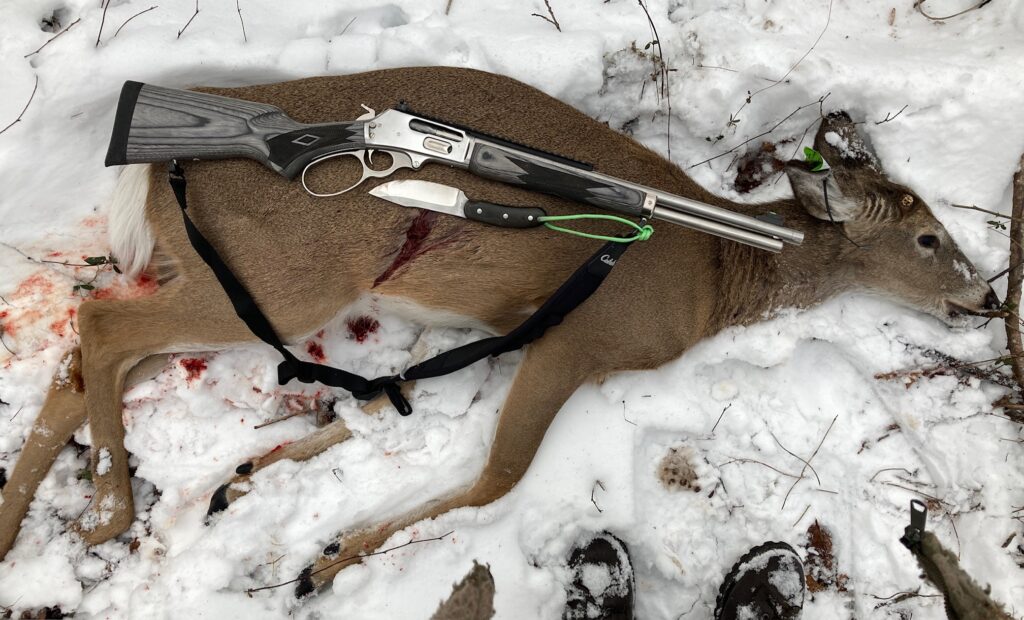
Deer I stalked and shot at 151 yards this week with the Marlin 1895 SBL. The 325-grain FTX bullet passed through lungs and stomach without slowing. Custom knife by JRJ John Johnson.
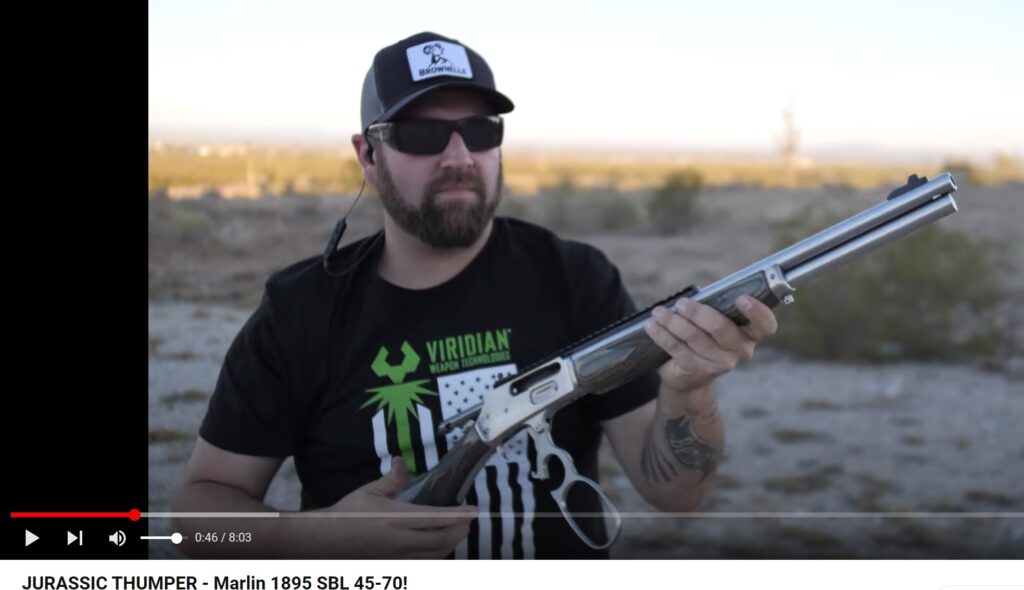
Exhibit A in macho gun reviews. Joe Cool shades in the shade. Biceps. Etc. Unfortunately, this rifle will not make his or your you-know-what bigger.

A 45-70 dangerous game round I loaded, using the 325-grain solid brass bullet by Cutting Edge Bullets. This is for stopping a grizzly
Irv’s summertime camping gear recommendations
Summertime Camping Equipment Review
The good, the bad, and the ugly….maybe
by
Irving Krasnoshtayn, Special Guest at joshfirst.com
When I was a kid, my family did not go camping. There was nowhere to go. The “open space” in Brooklyn, New York, was the little crack between the concrete slabs on every sidewalk where small sprouts of grass grow. Football, hockey, even baseball games were played in the street or in a crowded public park if one was near enough. People in tents were known as homeless. The first time I went camping was with a bunch of college friends over 20 years ago. It was a poorly planned and ragtag experiment, by guys with more spirit than knowledge. We brought an axe and chopped our own firewood, and then thought we were real outdoorsmen. More than anything we all got giant blisters on our soft city hands. Lots of things have changed since then, but my enjoyment of camping only grew from that one fun misadventure.
Fast forward just a few years and now I am the dad with little kids who excitedly ask me about camping over summer vacation. But unlike my childhood, society today is a lot more mobile, and outdoor recreation is a lot more widespread, common, and much more easily accessible. When you have a couple kids and a wife, you have to think not only about the easy, happy family coziness, fresh air, and the sunshine aspects of camping, but also about everyone being comfortable, repelling bugs, people going potty in the middle of the night, and having decent food. Meeting all of those goals with a family means that we get to try out a lot of camping gear, albeit mostly car camping and not always wilderness treks. Our destinations are usually commercial campgrounds and state and county parks. So here’s my honest review of some things I rely on when family camping. I know there are plenty of dads and moms out there who are hungry for this kind of information. Links to many of these items are below.
Tents: I have two tents, each costing around $100. One a six-person and the other an eight-person, both made by Coleman. But those sizes are a lie because each tent fits two people fewer than advertised, especially with all their gear. You have to think about keeping your stuff dry inside the tent in bad weather, so a backpack takes up the space of a person.
These Coleman tents are relatively easy to set up and they have been reliable. But buy a bigger tent than you think you need, unless you will be backpacking it on a mountain. In which case you will want the absolute lightest gear, which is a whole other story. Use strong steel stakes, they don’t bend as easily as aluminum and last longer. I also put down a cheap tarp on the ground slightly larger than the tent, to take off shoes before we get into the tent and to protect the bottom and keep it from tearing.
Sleeping bags: I have owned more sleeping bags than I can count on both hands. This key part of camping has been a long process for me, and I hope you can learn from my mistakes. In the course of learning sleeping lessons while camping the hard way, I have discovered I really don’t like mummy bags. Mummy bags are sold as a common camping cure-all, but they best fit small framed and narrowly proportioned people, while I want room for my tree trunk legs and wide shoulders. Don’t buy a bag from an unheard of company, like I have, while trying to save money; you will end up paying the real price in comfort and enjoyment, which is worth more than money. At the lower end of the price range, say around $40, Coleman makes decent sleeping bags. Some have cotton lining, some nylon, some acrylic, some flannel, but either way make sure you like the particular material against your skin before you walk out of the store with the bag. I have used everything from 20 degree bags to 50 degree bags, and absolutely none are as warm or breathable as they claim. Until you test your bag and understand its real limits, make sure you bring extra base clothing to keep warm at night. A drinking bottle filed with hot water can help overnight. Coleman’s Brazos is a decent model. A stuff sack for storing the sleeping bag short term is great to have too. To preserve their fill loft, sleeping bags must be stored long term either hung up hanging freely, or in large sacks that do not compress them.
Sleeping pads: One of the most important things I have bought for camping is a sleeping pad. I like a comfy sleep, what can I say. Once you sleep somewhere rocky you will understand why a good sleeping pad is important. Besides, I’m getting old and want to be comfortable. Walmart sells a cheap roll up pad like the military uses that is about a half an inch thick, and that is the minimum I would recommend. I highly recommend the best pad you can afford, either closed cell foam or inflatable. I have one for each family member of different types and thicknesses. The egg crate type is not bad but I prefer a firm type made of open/closed cell foam.
I own a few self-inflating pads but I’m afraid they might develop a hole and deflate like happened to me once. I like reliability, which the closed cell foam has.
Pillow: When camping with our car, we bring our pillows from home. When backpacking I take one of two inflatable pillows, but some people just bring a pillow case and stuff it with their clothing. That works.
Fire: Although I own many axes, such as the decent Cold Steel axe, I now rarely use one while camping. Instead I use a few different saws to get my firewood. Silky saws of Japan makes the best saws money can buy. The Silky Gomboy with medium teeth is the most comfortable and fastest cutting saw I know of besides using a chainsaw. Their teeth are wider than the spine so they cut very well and don’t bind. They are a pleasure to use but have been known to snap if used forcefully. Take your time and let the saw do the work. They can be found on sale for around $40 and like all good kit, are well worth it. Get the largest one you can afford. “Project Farm” of youtube fame recommended another couple of saws. I will be “real world” testing them soon.
Fire Starting: This is something I have practiced extensively and have found campers need to carry more than one way to start a fire, and know how to use each one. Yes, Bic lighters are a go-to but when it is freezing, snowing, or raining they may not work. Always carry your Bic/gas lighters on your person in a pocket, and NOT in your pack. The reason is your body will keep the lighter warm and the contents in a fluid and flammable state. If the lighter is really cold, the butane will not turn into a gas when you try to light it and it won’t work. Zippo lighters are okay as long as they don’t get wet or leak.
Wind is another reason I don’t rely on gas lighters or survival matches. If you do buy survival matches, make sure the container is waterproof and they are the type that can stay lit underwater. Yes they make those. I used a waterproof pill container filled with LIFEBOAT matches and cotton balls for my kids.
I have made videos throwing every type of lighter or match into a half foot of snow or a bucket of water, and the only thing that was reliable was a Ferrocerium rod. Known as a Ferro rod, I now buy them in bulk and make handles for them out of spent rifle cases. Use the spine of your knife and you will make all the sparks you need to start a fire.
At home I prepare a few cotton balls dipped into Vaseline, and store them in a small Ziploc bag. They have the added benefit of protecting your skin/hands. A Ferro rod will light one immediately and the Vaseline in it will burn for a good minute or two, if not longer. I will sometimes make feather sticks which a Ferro rod will also easily light if done correctly. I own magnesium fire starters, and they work, but they aren’t necessary. Again if it’s windy, the magnesium will often get blown away. Some people like to use military trioxane, but this extra expense is not necessary.
Camp chair: Bring a chair for each person if you can. This is advice that is easy when car camping and very difficult while backpacking. I have not yet found a lightweight folding chair that I like.
Cooking: I have spent hundreds of dollars on a titanium stove and the latest everything else for cooking, and have concluded just a few items are all I need to cook good food while camping. Stanley makes a $30-$40 frying pan kit which is worth it. Titanium frying pans which I own are lightweight but develop hotspots that then cook unevenly. The Stanley frying pan kit cooks everything evenly and comes with two plates, and a take-apart spatula that is almost priceless. Stanley also makes a few other kits including a pot kit and a mug/cup kit which are also very good. I have used them all extensively, and they develop a blackened bottom with open fires. Someone scientifically tested blackened pots and it will boil water approximately a minute faster because it absorbs the heat better. I have a lightweight folding stainless steel grate for chicken, hot dogs and burgers. Works great. I like a titanium cup for quickly boiling water for making tea or a ramen type meal. Lightweight Titanium spoons and forks are also worth buying. Better than any plastic.
Stoves: I like and own many packable wood stoves. The Solo stove is GOOD. It burns wood very efficiently and fast. Sometimes too fast, so you will need a lot of twigs on hand because it doesn’t hold much and you have to keep adding to keep the fire going. Esbit stoves don’t heat up enough for my liking and alcohol stoves might work, but I don’t want to carry alcohol that I can’t drink. Firebox makes quite possibly the best balance of reliability, compactness, yet high capacity wood burning stove on the market. It is amazing and I highly recommend it. The Firebox Nano model is tiny yet unfolds large enough to cook a morning meal without any fuss.
Cooler: I prefer hard sided coolers, because they keep their shape and hold ice overnight, even in the hottest summers. They also repel the sharp claws of raccoons.
Lighting: You will need to see when it gets dark. I prefer headlamps over flashlights because they keep both hands free. I bring one for each person, even the kids. I give out glow sticks just to see where other people are. Any headlamp over 200 lumens is good. Wide beams are more useful for close range. In my work as an electrician, I use headlamps every single day. The cheaper brands have always failed me because they use cheap circuitry and switches that eventually fail just when you need them most. Energizer makes many excellent headlamps.
Eveready makes a good model for $10. On the higher end, Petzl, Streamlight, Black Diamond, Fenix, Surefire and many others make very good lights. Don’t buy a crappy light, because you don’t need to. The good ones don’t cost much more than the really bad ones. I don’t use rechargeable batteries when camping, because unless you have solar panels how are you going to charge it? I’m not going to carry a battery power bank. I bring an extra set of fresh batteries. [Editor’s note: I have used two different Anker solar chargers on long distance ten-day backpacking trips and they work well when matched with the right battery – JF]
Rope: Buy some paracord and keep it in different places where you might need ten or twenty feet of it. Home Depot sells a decent paracord. The brighter colors are better, because your eye will see them and stop your feet before you trip over them when they are guyed out around a tent or a tarp shelter. Also useful for tying down your stuff in strong wind.
Duct Tape: I like gorilla tape. It sticks better than any duct tape I have ever used. Wrap a few feet around something like your lighter.
Multitool: I prefer Leatherman. The wingman model has scissors, a pocket clip, and is relatively light.
And finally, knives: Few outdoor items are more iconic or representative of camping than a fixed blade knife or one of the newfangled, robust, easy-open folding knives. Everyone has different sized hands and skin, so everyone prefers a different handle material and shape, and thicker or thinner, longer or shorter. There are so many knives on the market, I should begin by telling everyone to always carry a pocketknife. Preferably one with a locking mechanism so it doesn’t accidentally close on your fingers. Swiss army knives are OK for home use, but I don’t prefer them as a daily pocket carry.
Fixed blades are also necessary. I’ll start by recommending the least expensive of the bunch, Mora knives of Sweden. They are the best bang for your dollar at the moment. I recommend stainless steel over carbon steel so that your knife won’t rust, and if there is one thing you are guaranteed of on a camping trip, it is that your knife will get wet and it won’t get put away dry.
At around $20, the Mora companion model is a great knife for many reasons. It has a comfortable handle and an excellent sheath which clips onto your belt without you having to take it off. Mora uses a Scandinavian grind on their knives, which is excellent for “Bushcraft” type work, which is a variety of light to heavy utility work, plus food preparation. I prefer full flat grinds which are much more versatile, particularly for food preparation.
ESEE knives have an unconditional lifetime guarantee. They come in 1095 high carbon steel which may rust if not cared for. (Use vaseline from the cotton balls or plain mineral oil to prevent rust)
I used the ESEE 4HM model (~$120) for an entire camping trip and found it excelled at everything. GREAT knife.
In the Outdoors, the sheath is just as important as the knife.
First Aid Kit: Always carry some type of first aid kit and know how to use it. I was an EMT, and based on my experience I think everyone should at least learn the basics. Know how to stop bleeding with pressure or how to stabilize/support a sprained ankle. Accidents happen, be prepared, and having a good first aid kit is step one in being prepared. Car camping first aid kits can be almost like a mobile field hospital in size, and backpacking first aid kits must be streamlined and geared towards treating foot blisters, burns, and knife cuts.
I put together my own first aid kit in a one- gallon waterproof Ziploc bag, including everything from Band-Aids to gloves and gauze to common medications like ibuprofen and aspirin.
Have a great summer camping with your family!
LINKS:
tents:
sleeping bags:
| Coleman Green Valley 30°F Cool-Weather … |
sleeping pads:
Foam Sleep Pad- Extra Thick Camping Mat for Cots, Tents, Sleeping Bags & Sleepovers
Saws:
Silky GomBoy Professional Folding Saw 240mm Medium Teeth (121-24)
| Silky GomBoy Professional Folding Saw 2… |
Samurai KISI FC-240-LH / 9 1/2″ (24cm) Folding Curved Blade Saw Made in Japan
| Samurai KISI FC-240-LH / 9 1/2″ (24cm) … |
Fire making:
Cooking: pots pans
Stoves:
| Lite Camp Stove | Solo Stove |
|
Headlamps:
Knives:
ESEE 4HM Fixed Blade Knife w/ Kydex Sheath & Micarta Handle
| ESEE 4HM Fixed Blade Knife w/ Kydex She… |
That curious Rural-Urban divide thing
That curious Rural-Urban divide thing is really bugging me, and I want to share some personal experiences and observations about it with you.
If we could just please get away for one minute from the Justice Sonia Sotomayor bribery scandal, please. Yes, far-left Justice Sonia Sotomayor took over THREE MILLION DOLLARS IN BRIBES from Penguin Random House to protect Penguin Random House when their critical lawsuit arrived before the US Supreme Court, and no, Sotomayor did not step aside and recuse herself or anything high-minded like that. She just blatantly ruled in favor of her three million dollar friends at Penguin Random House books, like nothing was the matter. Even though this is very much The Matter because bribes are a big no-no.
With all of the talk these days about ethics on that Most High and Illustrious Court, we would think that Justice Sotomayor’s blatant and impeachable criminality would be the main public subject of ridicule and hate these days. But we would be wrong, because evidently America’s urban people are really hating the rural people right now, instead, and they would rather discuss Naughty Rural People than that crooked, lying, cheating, impeachable Justice Sonia Sotomayor.
OK. So be it.
Seems like the general happiness, low crime, and high quality of life among rural residents is drawing the vengeful eye of the jaded urbanite. Rural people hunt, own lots of guns, commit almost no crimes with said guns, and yet are being told by the angry urbanites that they must nonetheless give them all up, and get in line for their creepy crawly bug breakfast.
Also bothering the Most High, Superior, Better Edumacated and Definitely Unhappy urbanites are things like “rural people smell bad”, “rural people drive large pickup trucks that expel a lot of carbon”, “rural people cut down trees and own chainsaws”, and a real big complaint is that rural people drive tractors and spread animal manure on fields. Pee-yew it stinks and is dirty! Stop it!
I know that in a rural bar a person could sit down over a cold Coors Lite or a delicious Yuengling Lager and have a reasonable, quiet conversation with a clueless-but-judgmental urbanite about how the rural people grow all the food and fiber and pretty wood that the urban people eat and use, and that rural people fill their stomachs with clean and cleanly killed wild game instead of mass-murdered industrial factory beef and chicken, and that rural guns hardly hurt anyone. But such a conversation is about as likely to happen as Justice Sotomayor is likely to resign her corrupt big ass from the US Supreme Court.
Liberal urban elites are similarly mysterious to rural hunters and their neighbors. For example, most American urban areas are crime ridden hellscapes with high taxes, high cost of living, low quality of life, poor public services, and yet…all the “educated” “knowledge jobs” are located in these sh*tholes. Supposedly these catastrophic urban areas are elite and nonetheless superior to rural places. They just are.
The real question I see is whether or not an urban person can overcome their prejudices, rise above their own fragile ego, and move to a healthy mental place (please do not move to my physical place, unless you become a NRA Life Member) that works for them and for rural people. The live-and-let-live nature of rural life tells us that rural people don’t sit in judgment of others, they are simply happy when left to themselves. It’s a pretty cool way to live, and mystified urban people could learn a thing or three from them.
Step one in your urban person learning process? Leave us the hell alone. Mind your own damned business, quit criticizing us, and stop telling us how to live while your own communities and people are in massive disarray and melt-down.
Step two, if you move to our rural communities because they are pretty, undeveloped, safe, and friendly, do not continue to vote and behave the way you did in the urban sh*thole place you just ran away from. Your former urban jackass lifestyle ruined your former hometown, and we don’t want any of it polluting our little slice of heaven out here in the sticks. So, if you move to a rural place, register as an Independent voter, buy some guns, learn to hunt, become self-reliant and less judgmental, and learn to hear what other people think. You might come around to thinking a US Supreme Court justice taking bribes is a bad thing.
A few local signs that the economy is smokin’ hot
Me: “Hi. I would like to have Cleon make me log arch, one that I can hook to my ATV, that is stronger than the Chinese junk being sold everywhere, and that is less expensive than the crazy-priced LogRite arches.”
Lynette: “Josh, what is your time frame?”
Me: “Well, I can use it in a week, but two or three weeks is no problem.”
Lynette: “Here’s the thing about timing. Back in June, we were about to lay off one of the welders, but we put out bids on ten jobs, any one or two of which would have carried us through the year. And between last week and this Monday we heard back that we won every single one of them. So we will not only be retaining that junior welder, but we are now looking for about five more to help us meet our commitments. We might not be able to get to your log arch for a while, but one of the men will call you back later today.”
And then one of the men did call me back, with terms and a price that more or less said “If we are going to make this for you, then you are going to pay big for taking us away from our real work.”
Another sign that our local and regional economy is smokin’ hot: The log trucks, the pallet trucks, the lumber trucks on the roads EVERYWHERE and at all times of day.
Never before have I seen so much activity in just one business sector, as I am seeing now in the timber industry, except maybe in 2008 when the Marcellus Shale boom was indeed booming across Pennsylvania.
Log trucks are especially visible. How can you miss a log truck? It dwarfs every other vehicle around it, and looks incredibly incongruous. Log trucks have these huge wide open bays or bunks to hold the logs, and a boom arm with a claw for lifting up 6,000 to 10,000-pound logs. A log truck has about 5,000 board feet or more of medium to high grade logs of all types on it, heading from someone’s private forest to someone else’s mill. From there the logs will be carefully analyzed for grade, and either sold-on or sawn up on site. Hardwood lumber is used in flooring, cabinetry, and furniture, all of which when active indicate a strong consumer and home building economy. Even tulip poplar, once sold for pennies per board foot, is now used for couch frames and cabinetry frames.
At every timber job there are expensive machines at work, with drivers who earn enough money to support a family. And the loggers, guys born with a chainsaw in one hand and a rifle in the other, they cut down a dangerous tree every ten minutes, then lop it and move on to the next before choking up the logs and skidding them to a landing.
Then there is the landowner, who gets good money for something they did absolutely nothing to create.
The sawmills, whether small Amish mills or huge international mills selling hundreds of thousands of board feet per week, are beehives of activity. Every person working there is earning money, and spending money, and contributing toward the larger economic activity around them.
Say nothing of the new homes and kitchen cabinets being built, or of the beautiful hardwood flooring and furniture being made for those new homes. All from someone’s private forest.
The point is, these are just two small examples of how the economy is exploding, and how after many years of stagnation we finally get to do more than scratch out a living, but actually do well and pay for our kids’ questionable college “education,” buy new cars, take nice vacations, and set something aside for our later years, when we are no longer able to work so hard.
It really is a new day in America, and boy does it feel good. One gets the impression that this good feeling is widespread across America, with the sad exception of places in North Carolina and Florida, recently hit hard by hurricanes, and our hearts go out to the victims there. The one thing they can rest assured about is that the materials needed to rebuild their lives are on their way as I write these words, and they are America-made, and America-grown.
Seasonal weather changes are natural, welcome
Seasonal changes are natural tick-tocks on the world’s clock.
Following a natural cycle keeps us in tune with nature, even if the conditions aren’t always to our liking.
Cold arrived today.
Driving north on Friday, I photographed the “polar vortex” front as it closed in on central Pennsylvania. It was a dramatic sight, indeed, and heralded the coming of winter.
Right away, I spoke out loud to myself about the need to buy new knobby tires for the truck. A long, cold, snowy winter is ahead, and I need to be as prepared as possible. Winter isn’t too challenging, if I’ve prepared for it.
Tonight we got our first wood fire going, after cleaning out the wood stove and adding new fire bricks. About a cord of last year’s split oak remains before we begin burning the oak that Viv, Isaac and I split this past spring. By the time we burn through the left over wood, the new wood should be completely dry. We will burn between three and four-and-a-half cords this winter at home.
Wood is a natural, sustainable, renewable heat source whose carbon is part of the planet’s natural cycle. We plant a lot of trees, and they absorb carbon to grow big. It’s a closed loop, which is appealing.
Living life according to the planet’s rhythms is natural and healthy. Will you get cold? Sure. That’s part of living. And if you think it’s cold here, check out Minnesota or Wisconsin or Idaho. Not to mention Alaska.
Just put on long undies and get some Filson wool jackets and vests. You might end up enjoying the cold weather. I certainly do.
What the heck is in EPA’s water?
Something bad is in the water the EPA staff are drinking in DC. It is making them nuts.
EPA (US Environmental Protection Agency, a place I once worked, a job once fraught with much philosophical disagreement) has proposed new regulations on air and water that basically put the agency in charge of every breath you take and every glass of water you drink. It is an unconstitutional power grab by regulation that flies in the face of existing law.
EPA now asserts control of every body of water in the country, and that includes farm ponds, man-made drainage ditches along your hunting camp road, little intermittent rivulets that run for a few days in the spring and winter and then sink into the ground all other times, etc. It is a remarkable effort to control, control, and control Americans. The stories now emanating from citizens clashing over this rule change with heavy-handed EPA staff are extraordinary. What amazes everyone with a bit of knowledge of these issues is how little the new rules do to actually protect water quality. In fact, they create incentives for private landowners to take matters into their own hands, before some bureaucrat shows up for a show down over an issue totally, completely outside the purview of federal government.
Of course, promoting centralized decision making and big government is what this is all about, not environmental quality.
Second issue: EPA’s new air regulations, basically putting a heavy damper on wood burning stoves. Yes, it is true that EPA is trying to shut down America’s best source of sustainable, renewable, biodegradable, natural, native, cheap heat – firewood. And firewood-burning stoves.
If you look at the new standards for wood burning stoves, the particulate emissions restrictions on new stoves are technically impossible to meet, and old stoves that are in stock are not grandfathered in; stove manufacturers might go out of business because they cannot sell off their existing wood stoves.
But like the water regulations, this is not about public health or air quality. Rather, these new rules are about undermining those citizens who are most self-reliant, least dependent upon others, most off-the-grid. You know, rural conservatives.
Even more than when I worked there, EPA has become a tool for inflicting harm on Americans, for advancing anti-American policies. It is time to put this rabid animal out of its misery, and start over with a new agency that is devoid of the cultural residue that allows this sort of behavior to happen in the first place. The role of government is to serve its citizens, not dominate them.
